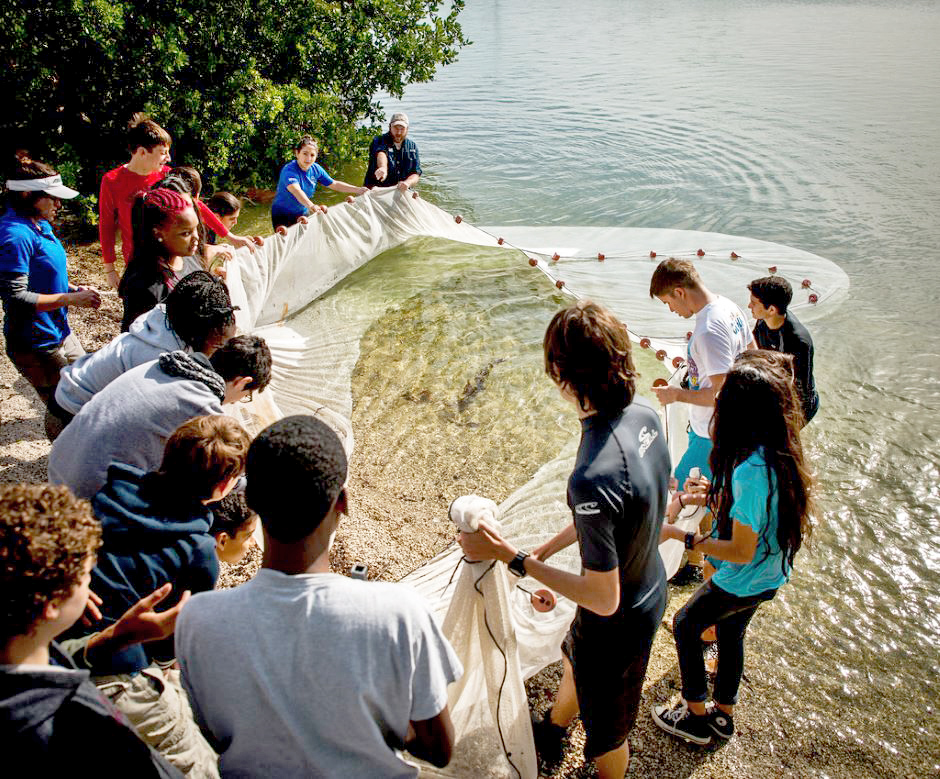Students at MAST@FIU Study Fish in Biscayne Bay
 Students from MAST@FIU and volunteers deploy a seine net into northern Biscayne Bay. (Credit: Florida International University)
Students from MAST@FIU and volunteers deploy a seine net into northern Biscayne Bay. (Credit: Florida International University)At the Marine Academy of Science and Technology, located at the Biscayne Bay Campus of Florida International University, students can enjoy a blended high school-college experience. The goal of the academy is to provide young people with early experience in marine biology and environmental science. The curriculum includes Honors, Advanced Placement and Dual Enrollment courses to challenge students in the field and prepare them for a future in STEM.
In order to prepare students for their future careers, the institution offers many opportunities to conduct fieldwork, work in laboratories and a variety of courses for students to choose from. While the school focuses on Science, Technology, Engineering and Mathematics, there is still space for the arts and humanities at MAST@FIU. For example, the School of Environment, Arts and Society (SEAS) offers a host of programs to their students, varying from biological services to English and Liberal Studies.
Opportunities for Students at MAST@FIU
Regardless of the program students choose to focus on, there are many opportunities for active learning. According to a press release, one such opportunity can be found through the school’s SEAS program. High school sophomores and juniors volunteer to help gather “data on the environment — including temperature, cloud cover, wind speed, salinity and turbidity — as part of a long-term ecological monitoring project.”
Additionally, the program allows student volunteers to help with fish surveys, collecting specimen from the nearby Biscayne Bay to study. Volunteers deploy a net to safely catch juvenile fish, whereafter they are examined, identified and released. Students document the species type, length and mass. After collecting all of the data, students examine the population results as well as the previously mentioned environmental factors to see what may have influenced populations that year. In short, all of the measurements are informing a long-term project looking at the bay’s health and the impacts it’s feeling from urbanization and climate change.
Conclusion
As the world continues to change and the future of the earth becomes more uncertain, teaching young people the importance of activism, involvement, and research will be vital in protecting the future. Bridgette Gunn, a teacher at MAST@FIU, started this program with the intention of highlighting the influence project-based learning can have on academic performance and perceptions of STEM careers—the program has become even more than that.
In the press release, Gun states, “This level of student involvement can help reinforce not just curricular content, but also environmentally conscientious principles that will foster the next generation of environmental stewards.” And given the state of the climate, motivated, ambitious and knowledgeable students will undoubtedly be a part of the solution.



0 comments